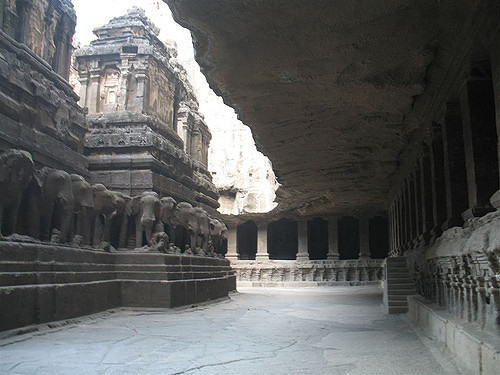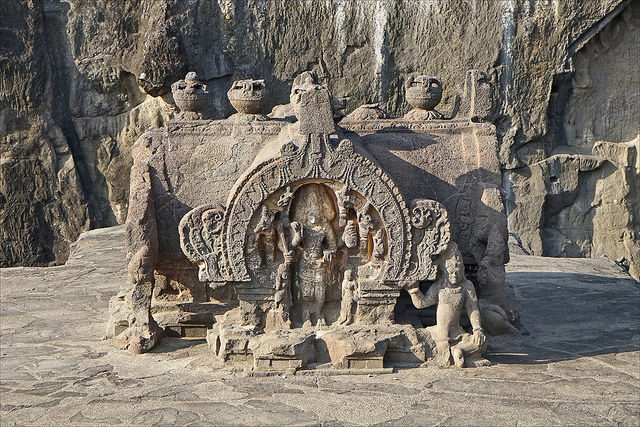15 Mysterious Facts About Kailash Temple – World’s Oldest Single Rock Carving

15 Mysterious Facts About Kailash Temple – World’s Oldest Single Rock Carving
We see ancient structures across the globe, including Egypt’s pyramids, Indonesia’s Borobudur, and the Pyramid of the Sun in the Valley of Mexico, and we wonder how? How could mankind build such enormous structures so far back in time? And this without the advanced technology that we enjoy today.

Futhermore, when you look at Stonehenge or similar prehistoric monuments, you immediately wonder: what drove men back then to build such a thing? Place them in situations where they are unable to provide concrete explanations, and humans often presume the same old storey, giving credit to a more advanced, sometimes alien, civilization to explain their perplexing mystery.
The last couple of generations have achieved much more than any others before, but still, it seems as if we are determined to discredit everything anyone before us ever accomplished if we ourselves can’t replicate it.
But the truth is, civilizations in ancient times were more advanced than we usually give them credit for. For instance, ancient Hindu Indians were masters of mathematics and architecture, with their trigonometry and algebra invented and developed independent of the Western world.

There are approximately 30 million Sanskrit texts still waiting for experts to translate. That’s about all of the other civilizations writings combined, and if some somehow we manage to interpret just a small fraction of them, we might just find answers to the whats and whys that are troubling us.
Like, for instance, how one temple was carved out of a mountain, stone by stone, ton by ton until 200,000 tons were extracted in no more than two decades to give the image of what is now the ancient Kailasa Temple in Maharashtra, India.

As to why, well, it is believed it was built as a tribute to the divine Lord Shiva, to symbolize his home on Mount Kailash in the Himalayas. And the legend says it was due to a death threatening sickness a king had, and his queen’s determination to build Shiva a temple if only her deity would answer her prayers and save her poor husband from the inevitable.
Time was running out and so if this was to happen it had to be completed in no more than a week. And while many saw it as an impossible task, according to the Marathi people and this legend of theirs, an architect named Kokasa had a perfect solution in mind and built the temple within a week as he promised he would, carving a mountain from its top downwards. Thanks to him and his inventiveness, the king was saved, or so the legend goes.

While this might not be entirely true, with many historians and archeologists believing it was constructed somewhere in between years 757 and 783 AD, the fact still remains that it actually was constructed over a single rock by excavating a mountain from the top downwards.
In the period of two decades, by using a practice referred to as a “cut-out monolith” instead of the much more common and utilized “cut-in monolith” method, Hindus of the Rashtrakuta Empire excavated a total of 200,000 tons of rock, although others suggest that it was actually 400,000 tons, out of a volcanic rock in the Charanandri Hills in Ellora.
This means that, if people were working 12 hours a day, every single day, for let’s say 20 years, they would have to dig up no less than 20,000 tons a year, 1,666 tons a month, 55 tons a day, or 4-5 tons of rock every single hour.

And this takes into account only rocks and dust that had to be removed from the place, aside from the actual excavation of the temple as well as the time and workforce required so the Kailasa Temple could look like a place fit for a God.
Apart from the commitment and the immense collective effort required for it to be built, it is actually the complex design and the aesthetic manner in which it was constructed that makes this temple truly unique and stand out among the other 33 rock-cut religious cave-temples in the Ellora cave complex.
While on the top there are carved statues of elephants with a gorgeous Shikhara right beside them, the inside is filled with countless statues and reliefs as well as intricate carvings engraved almost in every corner.
The 100-foot tall pillar and the elephants in the Arcades carved at the very bottom of the temple, which give the impression that they are carrying Mount Kailash on their backs, make this place truly breathtaking.

The Ellora cave complex consists of 34 Hindu, Buddhist, and Jain Temples, all built by different civilizations in different times. Interestingly enough, they are all numbered, yet not chronologically.
Many archaeologists have come to an agreement that Kailasa is the oldest one built in the complex, while some even suggest it could date back much further than the official dating.